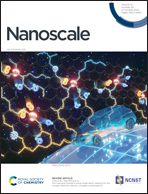Correlation of cell mechanics with the resistance to malignant transformation in naked mole rat fibroblasts†
Abstract
Naked mole rats (NMRs) demonstrate exceptional longevity and resistance to cancer. Using a biochemical approach, it was previously shown that the treatment of mouse fibroblast cells with RasV12 oncogene and SV40 Large T antigen (viral oncoprotein) led to malignant transformations of cells. In contrast, NMR fibroblasts were resistant to malignant transformations upon this treatment. Here we demonstrate that atomic force microscopy (AFM) can provide information which is in agreement with the above finding, and further, adds unique information about the physical properties of cells that is impossible to obtain by other existing techniques. AFM indentation data were collected from individual cells and subsequently processed through the brush model to obtain information about the mechanics of the cell body (absolute values of the effective Young's moduli). Furthermore, information about the physical properties of the pericellular layer surrounding the cells was obtained. We found a statistically significant decrease in the rigidity of mouse cells after the treatment, whereas there was no significant change found in the rigidity of NMR cells upon the treatment. We also found that the treatment caused a substantial increase in a long part of the pericellular layer in NMR cells only (the long brush was defined as having a size of >10 microns). The mouse cells and smaller brush did not show statistically significant changes upon treatment. The observed change in cell mechanics is in agreement with the frequently observed decrease in cell rigidity during progression towards cancer. The change in the pericellular layer due to the malignant transformation of fibroblast cells has practically not been studied, though it was shown that the removal of part of the pericellular layer of NMR fibroblasts made the cells susceptible to malignant transformation. Although it is plausible to speculate that the observed increase in the long part of the brush layer of NMR cells might help cells to resist malignant transformations, the significance of the observed change in the pericellular layer is yet to be understood. As of now, we can conclude that changes in cell mechanics might be used as an indication of the resistance of NMR cells to malignant transformations.



 Please wait while we load your content...
Please wait while we load your content...